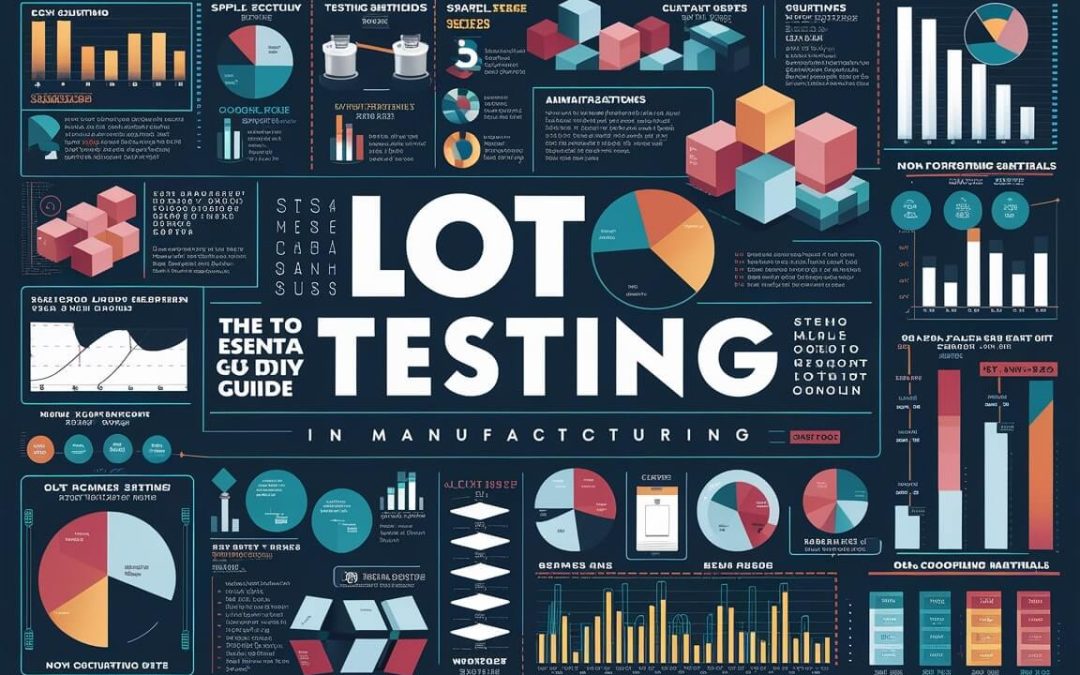Website navigation seems to be the future of how e-shoppers browse and make purchases as it allows for better organization and easier online navigation. So, when 80% of customers have a bad experience with your website, they are likely to switch to your competitors.
Therefore, regular monitoring of your website for better user experience is crucial. Customer feedback should be considered and it is critical to invest in these fields as your website is the only powerful platform for your sales.
In this post, I will focus on why usability testing and other UX testing research techniques should form an essential part of the overall business environment. On the other hand, I’ll be bringing along some top-of-the-line usability testing techniques introduced by Software Testing Service providers across India. In my deliberation, I will however look at whether the participants’ testing should be led by usability testers. Let’s start!
What is UX testing for example?
The UX testing design process typically involves obtaining user requirements information from a team of product managers, UX researchers, developers, quality assurance testers, and business executives. To create the best possible user experience, UX testing researchers collaborate with UX testing designers to ensure usability. The most common way of planning to lead ease-of-use testing requires imaginative and decisive ideas to picture all the conceivable test situations and pick those that would best supplement the association’s business targets and empower you to make a smoothed-out client experience.
As a result, usability UX testing enables user experience (UX testing) designers to produce high-quality designs that can assist businesses in meeting the needs of their customers. Furthermore, users are more likely to use a product if they have a positive user experience. Subsequently, usability testing offers organizations many advantages like the accompanying:
- improving user interactions,
- increasing customer satisfaction,
- distinguishing products,
- expediting client approvals, and
- streamlining the development process
Above all examples of types of usability testing and user research.
9 User Experience Testing Methods
Today, most organizations utilize a product innovation of some sort. As a result, the products we create today are crucial to a company’s success. The user experience helps a product organization translate its vision into technology. Ease of use testing gives all the client criticism that is important to make a positive item experience.
1. Guerilla Testing:
Guerrilla testing involves creating a prototype of an application or website and testing it with unrelated individuals in public places.
Let’s quickly get into understanding the various types of usability testing that you can carry out now that we have established the strong connection that exists between usability testing and initiatives for business expansion.
The simplest form of usability testing is guerrilla testing. Directing guerrilla testing requires making a model of an application or Site, then, at that point, testing it with irregular individuals out in the open spots. Individuals generally partake in these usability tests in return for a little gift. You can gather user feedback in real time and the procedure is extremely cost-effective.
2. Lab Usability Testing
Utilizing a specialized testing environment, you test an application or website during lab usability testing. A mediator can pose members’ inquiries, guide members through their test errands, and assemble early input. This technique for usability testing allows you to assemble rich input from members. In addition, test participants can get assistance from moderators and get answers to their questions if they get stuck.
3. Context oriented Request
The context-oriented request is like a client interview or perception process, which empowers an item group to secure data about an item’s use from genuine clients, continuously. The cycle frequently includes offering inquiries to the clients ahead of time, then presenting them to the item while noticing clients work in their own current circumstances.
4. Remote- Unmoderated Usability Testing
A phone interview is a form of remote usability UX testing in which participants must be instructed by moderators on how to carry out particular tasks on their own devices. The clients’ criticism is then gathered naturally.
Remote, unmoderated usability testing is a cost-effective, reliable option that does not necessitate the presence of a moderator. Participants in remote, unmoderated usability testing complete specific tasks within a specified test environment. Although remote testing is a cost-effective method, the outcomes you get may not be as detailed as you would like.
5. Card Sorting
One more magnificent technique for UX testing, card arranging assists you with focusing on elements and content inside the UI. After putting content and features on cards, the procedure asks test takers to organize them into groups and categories. A moderator should try to understand the participants’ logic and follow their reasoning after they have sorted the cards.
6. Session Recording
Session recording is a method for recording the real-time interactions of real, anonymous users. By understanding clients’ collaborations with an item, you can find what highlights clients see as generally interesting or valuable. A heatmap that can be used for analysis can be created using all of the information you gather. Additionally, this procedure aids in the identification of any issues or complications that participants encounter when interacting with a product.
7. Tree Testing:
A tree test, or a topic findability/usability assessment tool, focuses on the question if the information that a website or an app provides is easy to find and navigate through.
Visitors guide their way through the outline of the website (the “tree”) by selecting tree scale nodes (items), or entering routes (services or more information).
It helps in the visualization of obstacles and ensures users’ proper journey.
The steps are delineating the aims, designing the hormone structure, deciding on the expected tasks, picking patients involved, running the experiment and finally analyzing the results.
8. A/B Testing:
Knowing what users like the best about the app allows us to optimize their experience.
What is A/B Testing?
A/B testing (or split testing) is the one that counts the outputs generated from two design elements; A and B.
It allows to test which version is more successful in referring to parameters such as user engagement, conversions, or the other global indicators.
The core of A/B testing is the examination of two versions of a particular website layout, headline, or the same element of a web page.
A/B testing is used by all marketing departments, designers, and software engineers and may be used to get higher customer satisfaction or equity.
9. TOP 5 UX Testing Tools
Let’s explore five unique UX testing tools for test automation that cater to different aspects of user experience research and optimization:
1. UXtweak:
Utilizing UXtweak as our go-to user research platform is an inclusive tool that incorporates usability testing, session recording, and heat maps.
Users’ reviews come in real-time, the highest value problems are identified and the site can be improved based on the level of errors that are detected.
Why We Like It:
- Click Heatmaps: Try to visualize where the users “click”, “hover” and do “scrolling” on your pages. Write the second sentence for the given topic.
- Session Recordings: Employ individual user sessions to recognize how the visitors navigate the website.
- Form Analytics: Examine completion rates and drop-offs during form submission.
2. Lookback:
The facilitation of live video interviews with users is one of the powerful capabilities of Lookback. Users sit in front of the screen, presenting you with the environment they use and giving you the chance to ask questions, see their screens, and draw qualitative insights.
It’s ideal for website in-context usability testing and user feedback sessions.
Why We Like It:
- Live Interviews: From now arranges interviews with the participants are it in real time.
- Screen Sharing: Have users share their display during the tasks.
- Mobile App Testing: Fast-track testing of your mobile applications.
3. Hotjar: Heatmaps, i.e. surveys and users’ feedback, provide a way for personalizing the website and meeting the needs of visitors.
Hotjar uses heatmaps, session recording, survey, and feedback analysis features altogether.
It helps you to grasp the usability, flag out the bottlenecks, and promote user contentment.
Why We Like IT:
- Heatmaps: Envision clicks and scrolls and see where people lose attention.
- Feedback Polls: Ask users right on your site their opinions directly. Listen to the given audio and then chime in with your specific response.
- Session Recordings: Here, analyze how they proceed on your website’s pages.
4. User Testing:
The platform User Testing gives consumers entry to a vast user panel that dares to do the given scenario tasks of your website or smart device.
You watch recordings of your coaching sessions, and you are given a comprehensive summary.
Why We Like IT:
- Diverse User Panel: Group your audience together by the characteristics, interests, and activities of each participant.
- Task-Based Testing: Provide users with task-based activities to boost their confidence.
- Rapid Insights: Get a feedback within a few hours.
5. Optimal Workshop:
What It Is:
The Optimal Workshop company is good at all methods that examine the structure of the navigation system, thus tree testing, card matching, etc.
It helps you create a logical structure of your content which is in line with the objective of the speech.
Why We Like It:
- Tree Testing: Check out the easiness of the user to locate products in your site structure.
- Card Sorting: Make the users the advocates of category formatting.
- Chalkmark: Prove the efficiency of your navigation texts by conducting tests. – Humanize the given sentence.
Don’t forget! The selection of testing tools ought to be guided by the kind of research you wish to conduct. The type of insights that you want to discover is what you should be focused on.
Testing, Testing…….
Since enhancing the user experience is so crucial to a company’s success, UX testing research offers numerous significant advantages. UX testing research is an important part of the design process. It starts with gathering detailed information about what users need at the beginning of a project and then uses usability testing to evaluate a system’s most complex functionality. By removing any guesswork from the development process, user experience research helps product teams develop a solid understanding of the desired outcomes.
Common User Experience Testing Questions
1. What is User Experience Testing and its role in product/service development?
Answer: First of the kind is User Experience UX testing which probes into the ways users interact with the product, product or the app. It emphasizes user experience, ease of access to functions and all the attributes that make it a satisfying tool to use.
2. Why We Use UX Testing?
Answer: UX testing offers a keen user-centered approach that helps meet users’ needs, stimulates their engagement and reduces friction. It helps design errors to be highlighted and suggestions for improvement are drawn from that.
3. The Types of UX Testing What’s That?
Answer: Common types include:
- Usability Testing: Looking into users while they are doing tasks.
- A/B Testing: From comparative two versions to search which one works more successfully.
- Tree Testing: Designing a framework based on the organization of information, i. e. information architecture in the project.
- Eye Tracking: Examining, at which point the visual craving of the users strengthens.
- Surveys and Questionnaires: Users are predominantly the service.
4. Testing UX: When and How?
Answer: UX testing must be done at several stages that are:
- Early Design: The validation of concepts and wireframes of the product is crucial.
- Mid-Development: Test prototypes.
- Post-Launch: Rely on user feedback to make constant improvements, upgrades, and adjustments.
5. What Metrics are used in UX testing?
UX usability testing is a crucial process in the design and development of digital products, but it can often be overwhelming for the inexperienced in terms of what metrics matter.
Key metrics include:
- Task Success Rate: How much the search engine users can successfully fulfill their tasks.
- Time on Task: What the “ticks clock” shows like carrying out the actions.
- Error Rate: User-made errors and their frequency.
- Satisfaction (e.g., NPS): On the whole of user enjoyment.





